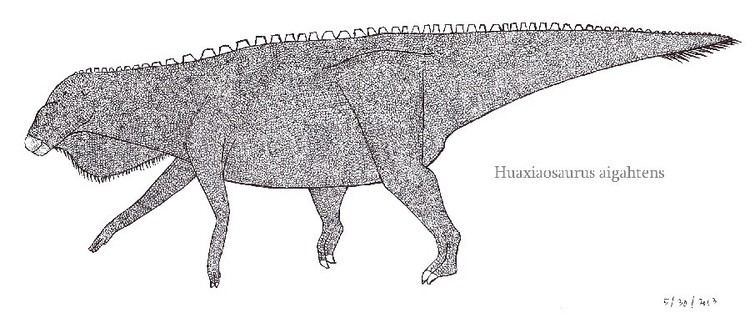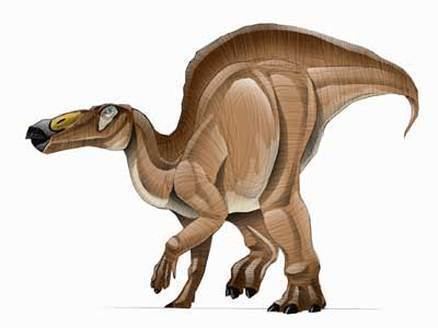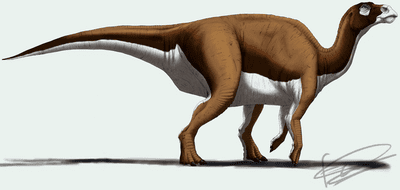Kingdom Animalia Clade Dinosauria Family †Hadrosauridae Phylum Chordata Order Ornithischia | Class Reptilia Suborder †Ornithopoda Subfamily †Saurolophinae Rank Species | |
 | ||
Similar Magnapaulia, Cedarpelta, Amtocephale, Ornithischia, Barsboldia | ||
Huaxiaosaurus is a genus of saurolophine hadrosaurid dinosaur, discovered in Cretaceous rocks of Zhucheng, Shandong, China. A large hadrosaur, some of its estimated dimensions include a length of 18.7 metres (61 ft) and a height of 11.3 metres (37 ft) (in a tripodal posture) makes it one of the largest Ornithopods known. It lived in the same time and place as Shantungosaurus and Zhuchengosaurus, and is almost certainly the same animal as Shantungosaurus.
Contents

Discovery and naming

In March 2008 during excavations in the quarry near the city of Zhucheng, the province of Shandong, bones were found belonging to the prehistoric species. In addition to the fossils of many different species, the skeleton of a huge hadrosaur was found. The excavation uncovered a block the size of twenty square metres containing this giant beast. After a careful examination it was concluded that the bones belonged to a giant new species of dinosaur, different from others like Shantungosaurus and Zhuchengosaurus. In 2011 came the scientific description, sponsored by Wang Kebai and Li Dunjing. A new species of dinosaur had been named. The genus name is derived from Huaxia - the ancient word for China. The specific epithet is given in Chinese, (jù dà), and means giant. Aigahtens is identical to the Latin word giganteus. Huaxiaosaurus should not be confused with Huaxiasaurus, a nomen nudum, and the later name for it, Huaxiagnathus.
Description

The type and only specimen consists of a fairly complete skeleton with a skull. The bones were found in the geological strata, of the Xingzhuang Formation. It includes the left thigh, the middle part of the lower jaw, a large part of the spine, the shoulders, the front legs, the pelvis and the hind legs. Huaxiaosaurus differs from Zhuchengosaurus by owning ten, instead of nine, sacral vertebra and Shantungosaurus by a groove in the underside of the sacral vertebrae. Other researchers, however, had already stated that the quarry, which Zhuchengosaurus also shows, was not sufficient to distinguish. In the older kind of Shantungosaurus the coalescence of extra vertebrae in the sacrum was a common effect of aging. It may be that all three taxa coincide in the name Shantungosaurus, and that Huaxiaosaurus just represents a big old individual of that species. The skull is very elongated, narrow and flat. The lower jaws are high. The teeth are in high tooth batteries. The spine consists of 16 cervical vertebra, 20 dorsal vertebra, 10 sacral vertebra and 18 (preserved) tail vertebra. The cervical vertebrae are relatively short and spinous; however there are long spines on the vertebra near the base of the tail. The front legs are relatively small with four weight bearing fingers but in absolute terms still reach a length of 2 metres (6 ft 7 in). The humerus, 92–98 centimetres (36–39 in) long, was quite robust in order to support the massive weight of this hadrosaur. The hind legs are very robust and heavily muscled. The femur is 170–172 centimetres (67–68 in) long. The tibia is shorter at 145–147 centimetres (57–58 in) long. Estimate for this animal is a length of 18.7 metres (61 ft), and a height of 11.3 metres (37 ft) (in a tripodal posture).

